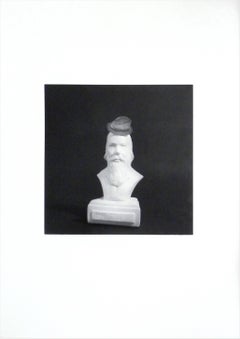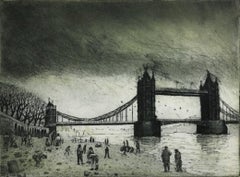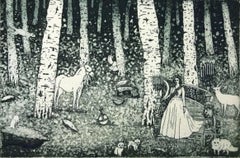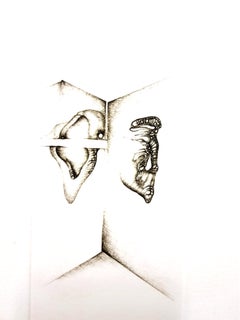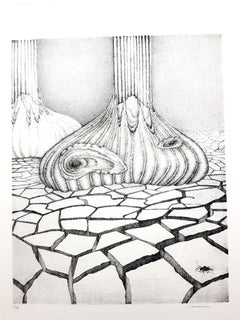People Still-life Prints
to
172
317
155
208
104
46
Overall Width
to
Overall Height
to
259
149
60
52
29
24
22
20
15
9
4
4
2
1
21
20
16
14
11
43
13
506
267
4
7
11
11
18
55
64
112
112
42
36
520
267
43
830
782
707
480
417
379
282
264
240
195
183
183
158
149
136
134
133
132
117
113
241
182
179
111
65
89
264
514
290
Art Subject: People
Brahms / Sombrero de fieltro
Located in Mexico City, MX
Artist's statement: In the last years, parallel to photography and video, I have been making works on canvas, prints, drawings, collages, and small installations. Many of these piece...
Category
Early 2000s Contemporary Still-life Prints
Materials
Photogravure
Robyn Forbes, Fowey Sailing, Limited Edition Print, Sailing Art, Affordable Art
Located in Deddington, GB
Fowey Sailing [2021]
Limited Edition
Screen Print on Paper
Edition number of 20
Image size: H:25 cm x W:60 cm
Complete Size of Unframed Work: H:70 cm x W:40 cm x D:0.1cm
Sold Unframed
Please note that insitu images are purely an indication of how a piece may look
Fowey River Racing is a limited edition print by Robyn Forbes...
Category
21st Century and Contemporary Contemporary Landscape Prints
Materials
Paper, Screen
Tim Southalll, Mudlarking, Affordable Limited Editon Landscape Print
By Tim Southall
Located in Deddington, GB
Mudlarking By Tim Southall [2021]
Limited Edition
Etching
Image size: H:15 cm x W:20 cm
Complete Size of Unframed Work: H:25 cm x W:30 cm x D:0.01cm
Sold Unframed
Please note that insitu images are purely an indication of how a piece may look
At low tide on a stormy day in London, people rummage around in the muddy shores of the River Thames. Dominating the scene is the formidable Tower Bridge. These ‘mudlarkers’ are searching for scraps and broken bits of history - rummaging in the muddy shore of the river. Who knows what treasures will be discovered. Originally a mudlark was someone who scavenged in river mud for items of value, a term used especially to describe those who scavenged this way in London during the late 18th and 19th centuries. The practice of searching the banks of rivers for items continues in the modern era, with newer technology such as metal detectors...
Category
21st Century and Contemporary Contemporary Landscape Prints
Materials
Paper, Etching
Tim Southall, Winter Queens, Black and white limited edition print
By Tim Southall
Located in Deddington, GB
Winter Queens By Tim Southall [2021]
limited_edition
etching
Edition number 2 & 3 / 75
Image size: H:10 cm x W:15 cm
Complete Size of Unframed Work: H...
Category
21st Century and Contemporary Contemporary Still-life Prints
Materials
Etching
Fred Deux - Grey Surrealism I - Signed Original Etching
By Fred Deux
Located in Collonge Bellerive, Geneve, CH
Fred Deux - Grey I - Signed Original Etching
Signed and Numbered
Edition of 100
Dimensions: 24 x 14 cm
Fred Deux
Fred Deux, illustrator, oral poet, writer, and, under the pseudony...
Category
1970s Surrealist Still-life Prints
Materials
Etching
Gochka Charewicz - Herbarium - Original Signed Lithograph
Located in Collonge Bellerive, Geneve, CH
CHAREWICZ Gochka (XXe)
Michel Butor's Herbarium
Signed and numbered 2/29
Dimensions: 42 x 32 cm. Toutes marges.
Category
1980s Modern Still-life Prints
Materials
Lithograph
Mary Knowland, Poppy 20, Original Monoprint on Paper, Contemporary Art
Located in Deddington, GB
Mary Knowland
Poppy 20
Original Monoprint on Paper
Mount Size H 44cm x W 34.5cm
Image Size H 28cm x W 18.5cm
Sold Unframed
(Please note that in situ images are purely an indication o...
Category
21st Century and Contemporary Contemporary Still-life Prints
Materials
Paper, Monoprint
Vicky Oldfield, Tulip, Limited Edition Still Life Print, Contemporary Art
Located in Deddington, GB
Vicky Oldfield
Tulip
Limited Edition Collograph Print
Edition of 20
Image Size: H 17.5cm x W 11cm
Sheet Size: H 40cm x W 30cm x D 0.5cm
Sold Unframed
Please note that insitu images a...
Category
21st Century and Contemporary Impressionist Interior Prints
Materials
Paper, Ink
D is for Dog, Clare Halifax, Alphabet Art, Limited Edition Print, Animal Art
Located in Deddington, GB
Clare Halifax
D is for Dog
Limited Edition 3 Colour Silkscreen Print
Edition of 100
Image Size: H 35cm x W 35cm
Sheet Size: H 37cm x W 38cm x D 0.1cm
Sold Unframed
(Please note that ...
Category
21st Century and Contemporary Pointillist Animal Prints
Materials
Paper, Screen
Change The Story 4
Located in Boston, MA
Artist Commentary:
“Collage is the exploitation of the chance meeting of two distant realities on an unfamiliar plane… and the spark of poetry that leaps across the gap as the two r...
Category
21st Century and Contemporary Abstract Still-life Prints
Materials
Mixed Media, Rag Paper, Monoprint
Pearls, 2019, black and white hand-colored giclée by Shelter Serra
Located in Brooklyn, NY
Pearls, 2019, 15”x15” inches, unique hand-colored giclée on Somerset Velvet
This contemporary black and white hand colored giclée print depicts a string of pearls, symbols of luxury and exoticness.
The close perspective, and enlarged detail, brings the viewer deep into the picture frame, indicating potential intimacy and future wealth.
Shelter Serra’s paintings, sculptures, and drawings explore mass consumption and cultural identity. He juxtaposes subject matters that are both common and recognizable: a Campbell's Soup Can, a copper plated baseball hat, and a Hermes Birkin bag...
Category
21st Century and Contemporary Contemporary Prints and Multiples
Materials
Paper, Giclée
Elizabeth Quandt 'Aries I' Limited Edition, Signed Etching of Ram's Head
Located in San Rafael, CA
Elizabeth Quandt (1922 - 1994)
Aries I, 1978
Etching on Arches paper
Singed and dated in pencil, lower right
Edition IX/L (9/50)
With artist's embossed stamp to lower center
Image 5in x 11in: Sheet 22 1/4in H x 18in L. Unframed.
The ram's skull pictured was found entwined in a stand of trees in Mendocino by the artist's grandchild, Timothy Brien Mailliard.
The first 25 prints in this edition of 50 are identified by Roman numerals and comprise the portfolio suite...
Category
Late 20th Century Contemporary Still-life Prints
Materials
Etching
Change The Story 7, Original Signed Surreal Mixed Media Monoprint on Paper
Located in Boston, MA
Change The Story 7, Original Signed Monoprint, 2020
21" x 13.5" (HxW) Mixed Media Collage on Paper
A mixed media collage and print on cotton rag paper, this work by artist Casey Blanchard...
Category
21st Century and Contemporary Surrealist Still-life Prints
Materials
Mixed Media, Rag Paper, Monoprint
Gussie and Connor 1, Original Signed Monoprint
Located in Boston, MA
Gussie and Connor 1
17" x 12" (HxW) Original Signed Monoprint
A simple color palette of blue and white is reminiscent of blue and white china. The use of natural elements and the bl...
Category
21st Century and Contemporary Contemporary Still-life Prints
Materials
Rag Paper, Monoprint
Face & Apple, Etching on Paper, Brown, Red & Yellow by Indian Artist " In Stock"
By Atin Basak
Located in Kolkata, West Bengal
Atin Basak - Untitled - 11 x 15 inches (Plate Size)
Etching on paper
Inclusive of shipment in a roll form
Style : Atin Basak says that his recent body of work represents the belief...
Category
Early 2000s Contemporary Figurative Prints
Materials
Paper, Etching
Les Pommes et Feuilles (Apples and Leaves)
Located in Palo Alto, CA
Composed of beautiful contrasting colors and sweeping line strokes that envelope the composition, everything works in unison to bring a warmth and richness to the quality of the imag...
Category
1950s Modern Still-life Prints
Materials
Lithograph
$8,000 Sale Price
20% Off
Window-No. 25
Located in Fairlawn, OH
Window-No. 25
Color mezzotint, September 2009
Signed, titled and numbered in pencil (see photos)
Edition: 70 (16/70)
Provenance:
Ninion and Sheldon Landy Collection, Donors of Art In...
Category
Early 2000s Abstract Still-life Prints
Materials
Mezzotint
Lulú
Located in Mexico City, MX
Artist's statement: In the last years, parallel to photography and video, I have been making works on canvas, prints, drawings, collages, and small installations. Many of these piece...
Category
Early 2000s Contemporary Still-life Prints
Materials
Photogravure
$2,000
Vacuum Cleaner, Bridgehampton
Located in Fairfield, CT
Category
Contemporary Prints and Multiples
Materials
C Print
Boy Nursing Sick Alligator
Located in Red Bank, NJ
Boy Nursing Sick Alligator by Brooks Frederick
Signed on front, lower right
Print, Portrait, Human Figure, Animal, Alligator
Category
21st Century and Contemporary Contemporary Still-life Prints
Materials
Archival Ink, Giclée
Maerten De Vos, Baptista Vrints, Christ Baptism, Engraving, Old Master
By Maerten De Vos
Located in Greven, DE
Maerten de Vos after
J Baptista Vrints
Baptism Scene
Engraving
Category
17th Century Renaissance Figurative Prints
Materials
Engraving
SCRIBBLE VERSION OF STILL LIFE #58
Located in Aventura, FL
Screenprint in colors on wove paper. Hand signed and numbered by the artist. HC Edition 6 of 12, the total edition was 90. Published by International Images, Putney, Vermont. Sheet...
Category
1990s Pop Art Still-life Prints
Materials
Paper, Screen
UNTITLED (NEPAL RELIEF)
Located in Aventura, FL
Seven color screen print on hand torn archival art paper. Hand signed and numbered on front, thumb print on verso by the artist. Edition 66 of 100.
Artwork is in excellent condi...
Category
2010s Street Art Still-life Prints
Materials
Paper, Screen
$2,962 Sale Price
25% Off
Still Life by Ludovic-Rodo Pissarro - Wood engraving
Located in London, GB
Still Life by Ludovic-Rodo Pissarro (1878-1952)
Wood engraving
14.5 x 10.8 cm (5 ³/₄ x 4 ¹/₄ inches)
Initialed LR in the plate
Exhibition
Fort Lauderdale, Museum of Art, Camille Pis...
Category
1910s Post-Impressionist Still-life Prints
Materials
Engraving
Les Marguerites (Daisies), c. 1950
Located in Palo Alto, CA
Created with a sensitive attention to color and value, this work is one of many floral motifs Braque depicted in his lifetime. Deeply saturated tones of ochre and brown express a subdued mood, while the hints of highlights convey to the viewer a sense of brightness and energy. A cluster of yellow daisies emerge from a simple ochre vase...
Category
1950s Modern Still-life Prints
Materials
Etching, Aquatint
$7,000 Sale Price
30% Off
RED VASE
By Peter Max
Located in Aventura, FL
Hand signed and numbered by the artist. Artwork is in excellent condition. Certificate of Authenticity included. Published by AMX Art Ltd., NY and printed by A Nussbaum, NY. HC edit...
Category
1980s Pop Art Interior Prints
Materials
Paper, Lithograph
$2,450 Sale Price
30% Off
Untitled, contemporary serigraphy/print figurative, silver leaf, bouquet, flower
Located in Ciudad de México, MX
Enveloped by outstretched paintings, Gonzalo García reveals the ever-present ghosts of our past and present in a delicate swirl of color, light, and fle...
Category
2010s Contemporary Figurative Prints
Materials
Silver
Pichet et Oiseau (Pitcher and the Bird)
Located in Palo Alto, CA
Expressing the talent and skill of Braque’s graphic works, this piece illustrates the artist’s remarkable ability to create imaginative abstract still lives. In this sense, Braque ha...
Category
1950s Modern Still-life Prints
Materials
Etching, Aquatint
$7,500 Sale Price
21% Off
Laurel In A Ravine - Original lithograph handsigned - 100 copies
Located in Paris, IDF
Bernard CATHELIN
Laurel in a ravine
Original lithograph, 1988
Handsigned in pencil
Inscribed EA (épreuve d'artiste) aside the edition of 100 copies
On Arches paper, size 40 x 31 (c....
Category
1980s Modern Still-life Prints
Materials
Lithograph
Fred Deux - Grey Surrealism II - Signed Original Etching
By Fred Deux
Located in Collonge Bellerive, Geneve, CH
Fred Deux - Grey I - Signed Original Etching
Signed and Numbered
Edition of 100
Dimensions: 24 x 14 cm
Fred Deux
Fred Deux, illustrator, oral poet, writer, and, under the pseudonym Jean Douassot, author of a cult book, La Gana, was a singular artist who cannot be categorised in terms of art fashions and trends. This autodidact, born in the basement of a large house in Boulogne-Billancourt to a working-class family, constantly had to overcome, as he would say. “He had to overcome”: overcome the basement walls to access the life which called him and burnt inside him. Overcome the barriers between the arts, moving from drawing to the written word, and from the page to the tape recorder, in the face of which he recounted stories to himself in a sort of endless reverie, constantly exploring the unknown in him. Overcoming and being overcome: gradually immersing himself in drawing, so that it was life itself which overcame him and surrendered to him.
Timeline
1924
Born in Boulogne-Billancourt, Paris. The Deux family lived in the basement of a building close to the Seine that was often flooded. These living conditions formed the biographical core around in which the artist would develop his work as a future writer and artist.
1942
Deux worked in a factory as an electrician and night guard.
1943
Deux becomes part of the FTP group to resist against the factory. And then joined the Maquis du Doubs.
1945
At the liberation, Deux joined the Moroccan Goumier, and took part of the campaigns of Vosges, Alsace and Germany.
1947
Returned to France. Installation in Marseille. Worked in an important library that belonged to the family of his wife.
1948
Discovered Breton, Bataille, Cendrars, Peret, Sade... and founded the sub-group of Surrealists in Marseille and formed a link with the literary magazine of Marseille, Cahiers du Sud
Encounters the works of Paul Klee.
He begins creating his first stains with paint for bicycle and impressions (fabric and ink). At the same time, he begins to take notes for what would become "Les Rats", first version of "La Gana".
1951
Meets Cecile Reims...
Category
1970s Surrealist Still-life Prints
Materials
Etching
Arman - Accumulations - Original Signed Etching
By Arman
Located in Collonge Bellerive, Geneve, CH
Arman - Accumulations - Original Signed Etching
Title: Accumulations
Signed
Dimensions: 57 x 38 cm
1980s
Arman
Armand Pierre Fernandez was ...
Category
1990s Realist Figurative Prints
Materials
Etching
Kale Cavalo Nero - Chromaluxe Print / X-Ray Photography: Simple Monochrome
By Hugh Turvey
Located in London, GB
In 2009, Hugh was appointed the first Artist in Residence for The British Institute of Radiology, since its inauguration in 1924 and Royal Charter granted by Her Majesty the Queen in...
Category
Early 2000s Contemporary Still-life Prints
Materials
Metal
Gussie and Connor 10
Located in Boston, MA
Artist Commentary:
Casey's wedding collections beautifully transform bouquets, lace, and other treasures into art pieces to last forever.
Words that describe this piece: wedding, f...
Category
21st Century and Contemporary Abstract Still-life Prints
Materials
Rag Paper, Monoprint, Mixed Media
Hortensias (Hydrangeas) - Chinese Abstract Flowers Still Life
By Zao Wou-Ki
Located in London, GB
This lithograph in colours is hand signed in pencil 23/95 by the artist "Zao Wou-Ki" in Chinese and Pinyin at the lower right margin.
It is also dated ‘53’ [1953] next to the signat...
Category
1950s Abstract Still-life Prints
Materials
Lithograph
Cake Shop, woodblock print by Clifton Karhu, red, yellow, black, framed, Japan
Located in Santa Fe, NM
Cake Shop, woodblock print by Clifton Karhu, red, yellow, black, framed, Japan
hand signed and numbered
Category
1990s Contemporary Landscape Prints
Materials
Paper
Apple and Lemon
Located in Palo Alto, CA
Roy Lichtenstein Apple and Lemon, 1983 is an excellent example of the artist’s later work. Lichtenstein largely abandoned his famous comic strip pan...
Category
1980s Pop Art Still-life Prints
Materials
Handmade Paper, Woodcut
Price Upon Request
Flowers, FS II.67
By Andy Warhol
Located in Miami, FL
Technical Information:
Andy Warhol
Flowers, FS II.67
1970
Screenprint
36 x 36 in.
Edition of 250
Signed and stamped number on verso
Category
1970s Pop Art Still-life Prints
Materials
Screen
Price Upon Request
Shoes
By Andy Warhol
Located in London, GB
Screenprint with diamond dust, 1980, on Arches Aquarelle (Cold Pressed) paper, signed and numbered in pencil, verso, from the edition of 60 (there were also 10 artist’s proofs), printed by Rupert Jason Smith...
Category
1980s Still-life Prints
Materials
Screen
Price Upon Request
Scribble Version of Still Life #58
Located in New York, NY
Screenprint in 36 colours on 100% rag 4-ply Museum Board
Category
Late 20th Century Pop Art Still-life Prints
Materials
Screen, Rag Paper
Price Upon Request
Nature Morte, Compotier - Etching and Drypoint by Pablo Picasso - 1909
Located in Roma, IT
Nature Morte, Compotier is a rare black and white drypoint on laid ivory-colored paper, realized by Pablo Picasso in 1909. Edition of 100.
Hand-signed in pencil on the lower right m...
Category
Early 1900s Cubist Figurative Prints
Materials
Etching, Drypoint
Whistle
By Valton Tyler
Located in Dallas, TX
In The New York Times Arts in America column, Edward M. Gomez writes of Valton Tyler, "visionary seems the right word for describing his vivid, unusual and technically refined painti...
Category
1970s Surrealist Still-life Prints
Materials
Rag Paper, Etching
Price Upon Request
Tulip Sundae
Located in Laguna Beach, CA
Best known for his paintings of cakes, pies, pastries, and toys, Wayne Thiebaud hadn’t planned on becoming a visual artist. He apprenticed as a cartoonist at Walt Disney studios and ...
Category
21st Century and Contemporary Contemporary Still-life Prints
Materials
Etching, Aquatint
Price Upon Request
Still Life on Porcelain
Located in Missouri, MO
Tom Wesselmann, (1931-2004)
"Still Life" (Stilleben) 1988
Porcelain with Polychrome
Ed. 169/299
Porcelain Size: approx. 13 x 14 inches
Overall Size: approx. 18 3/4 x 20 inches
Foun...
Category
1980s Pop Art Still-life Prints
Materials
Porcelain
Price Upon Request
154 Foot Sculpture That Never Was
By Valton Tyler
Located in Dallas, TX
In The New York Times Arts in America column, Edward M. Gomez writes of Valton Tyler, "visionary seems the right word for describing his vivid, unusual and technically refined painti...
Category
1970s Surrealist Prints and Multiples
Materials
Rag Paper, Etching, Aquatint
Price Upon Request
A Sculpture Framed by a Print
By Valton Tyler
Located in Dallas, TX
In The New York Times Arts in America column, Edward M. Gomez writes of Valton Tyler, "visionary seems the right word for describing his vivid, unusual and technically refined painti...
Category
Late 20th Century Surrealist Prints and Multiples
Materials
Rag Paper, Etching, Aquatint
Price Upon Request
Salvador Dali - Apricot - Original Hand-Signed Lithograph
Located in Collonge Bellerive, Geneve, CH
Salvador Dali - Apricot - Original Hand-Signed Lithograph
1969
Dimensions: P. 57 x 37 cm
Sheet: 75 x 56 cm
Handsigned, EA (Epreuve d'Artiste) aside from the edition of 200.
Paper :...
Category
1960s Surrealist Still-life Prints
Materials
Lithograph
Journey
By Valton Tyler
Located in Dallas, TX
In The New York Times Arts in America column, Edward M. Gomez wrote of Valton Tyler, "visionary seems the right word for describing his vivid, unusual and technically refined paintin...
Category
1960s Surrealist Figurative Prints
Materials
Rag Paper, Etching
Price Upon Request
Night Shift
By Valton Tyler
Located in Dallas, TX
In The New York Times Arts in America column, Edward M. Gomez wrote of Valton Tyler, "visionary seems the right word for describing his vivid, unusual and technically refined paintin...
Category
1970s Surrealist Still-life Prints
Materials
Rag Paper, Etching, Aquatint
Price Upon Request
Homage to Galileo
By Valton Tyler
Located in Dallas, TX
In The New York Times Arts in America column, Edward M. Gomez wrote of Valton Tyler, "visionary seems the right word for describing his vivid, unusual and technically refined paintin...
Category
1960s Outsider Art Still-life Prints
Materials
Rag Paper, Etching, Aquatint
Price Upon Request
Flowers FS II.70, 1970
By Andy Warhol
Located in New York, NY
Andy Warhol
Flowers (FS II.70), 1970
silkscreen on paper
36 x 36"
ed. of 250
signed in ball point pen and numbered with a rubber stamp on verso
Category
1960s Pop Art Still-life Prints
Materials
Archival Ink
Price Upon Request
Still Thinking About These?
All Recently ViewedMore Ways To Browse
Nandi Bull
New England Church Painting
Newfoundland Dog Art
Newport Rhode Island Paintings
Norman C Black Painting
Norman Prescott
Norval Morrisseau
Notorious Big
Nude Scape
O T Clark
Oasis Vintage Poster
Octavius Clark
Oil Painting Constantinople
Oil Painting Dog Sleeping
Oil Painting In Bone
Oil Painting Steamship
Oil Painting With Computer
Oil Thomas Creswick
